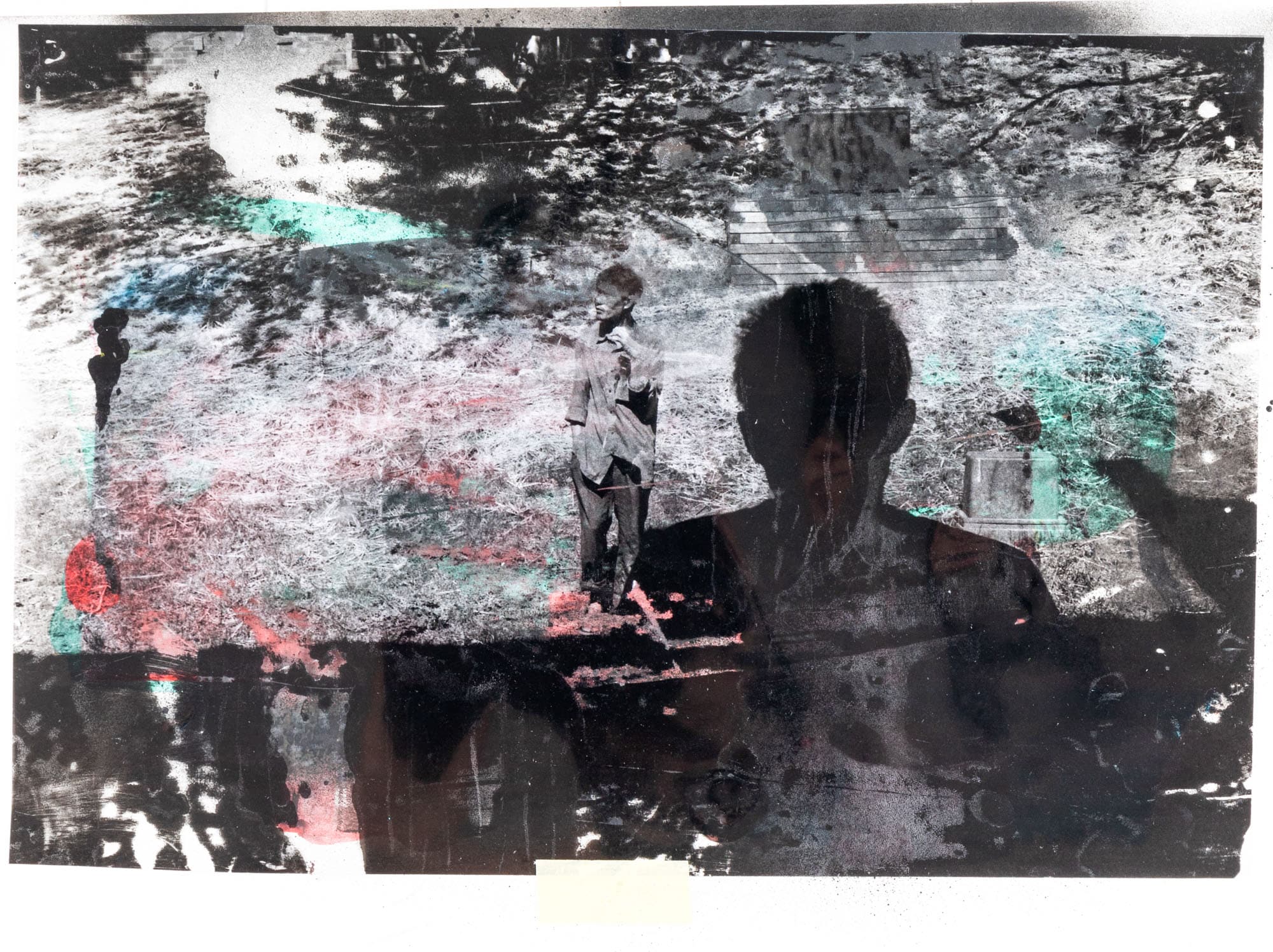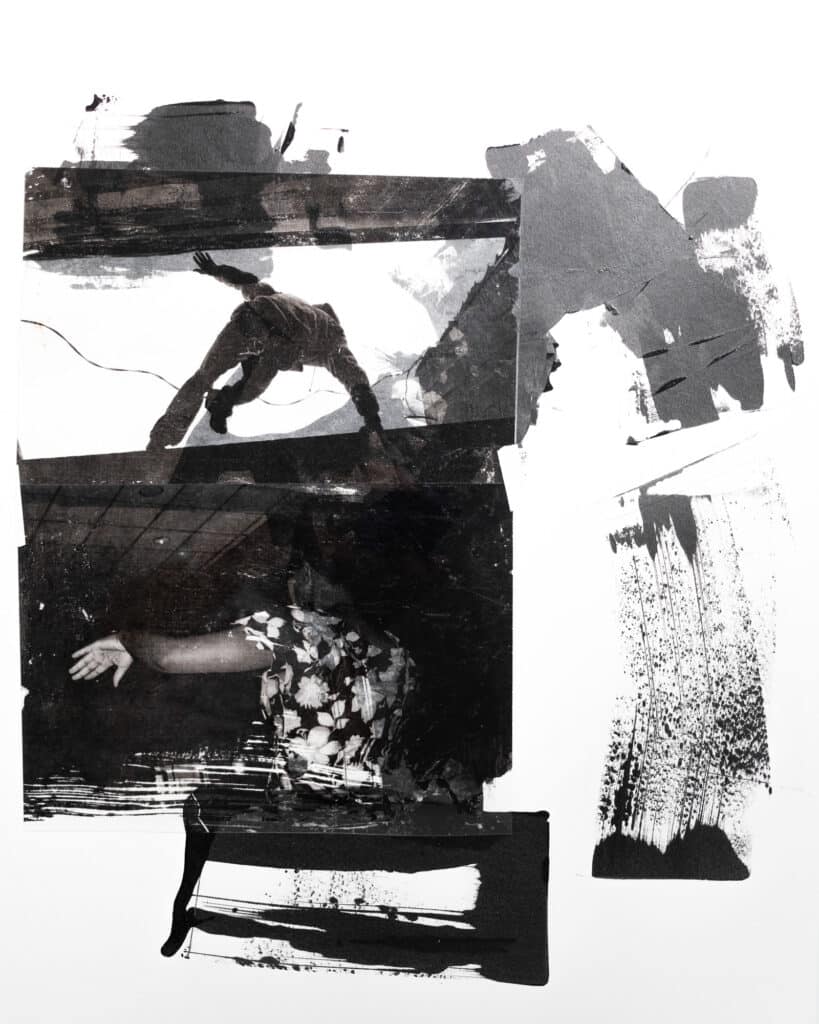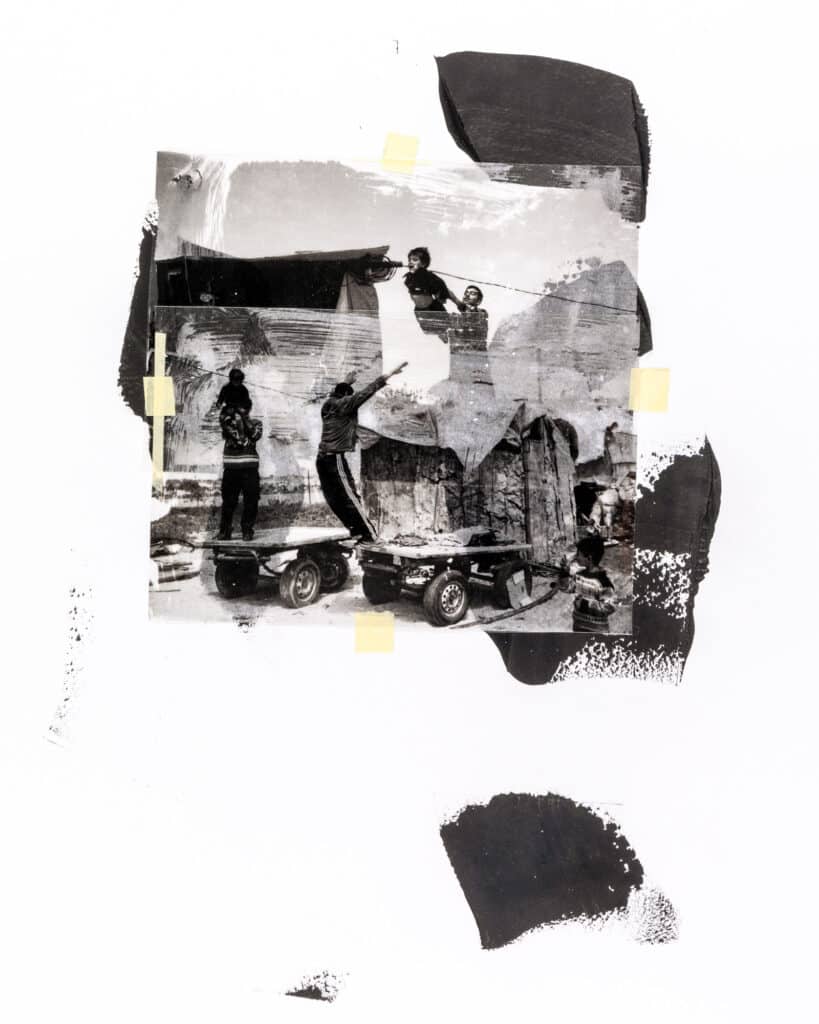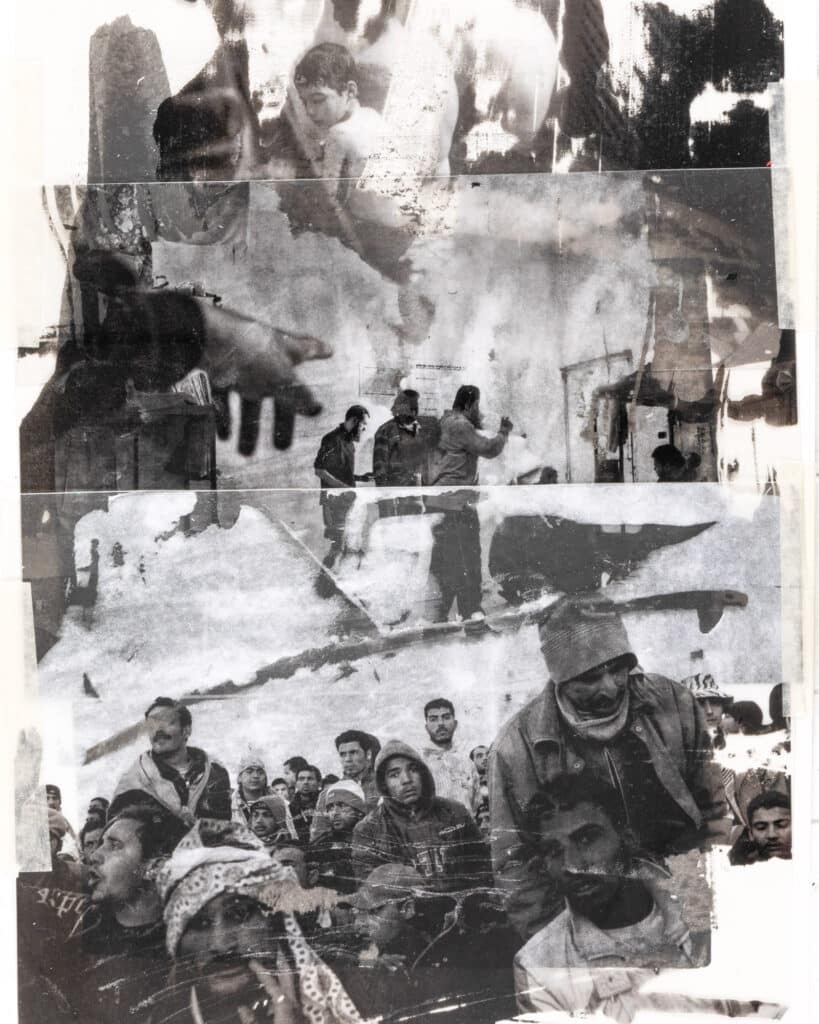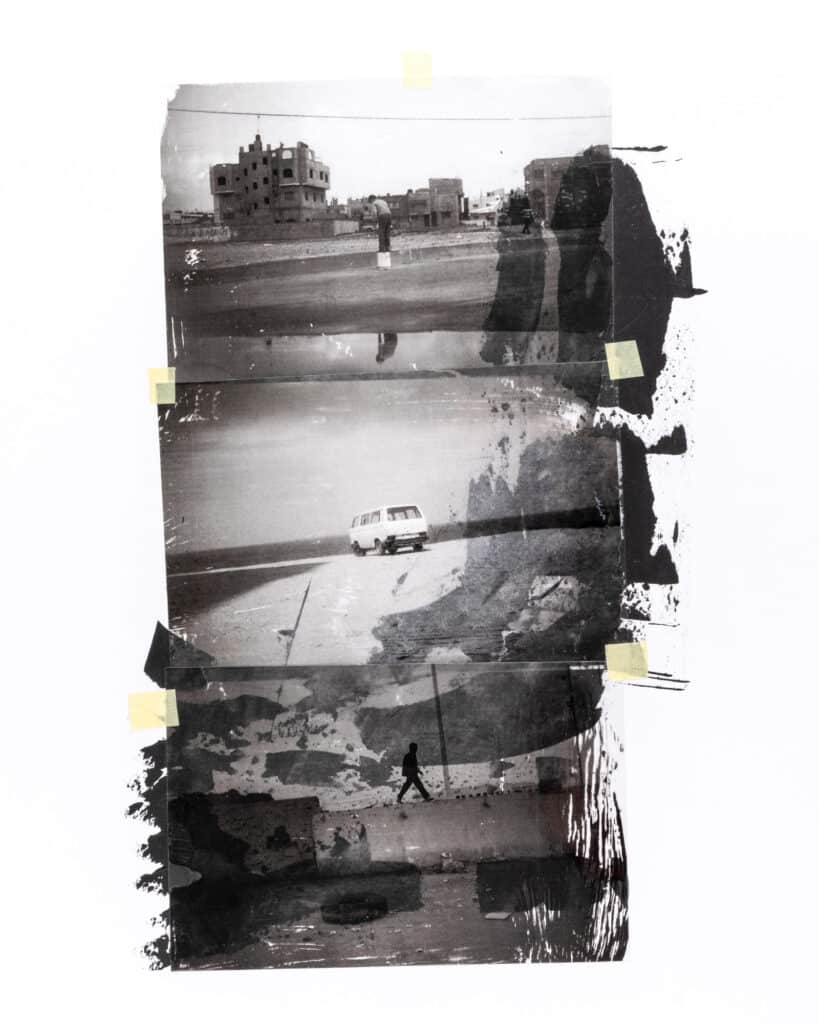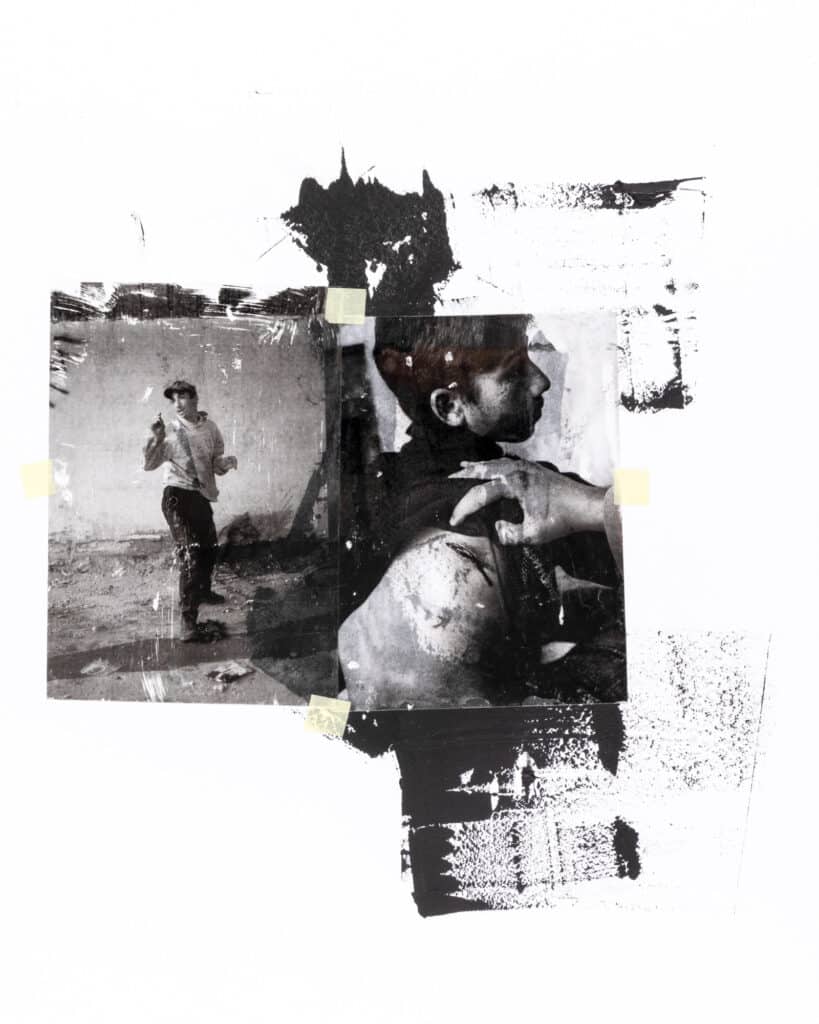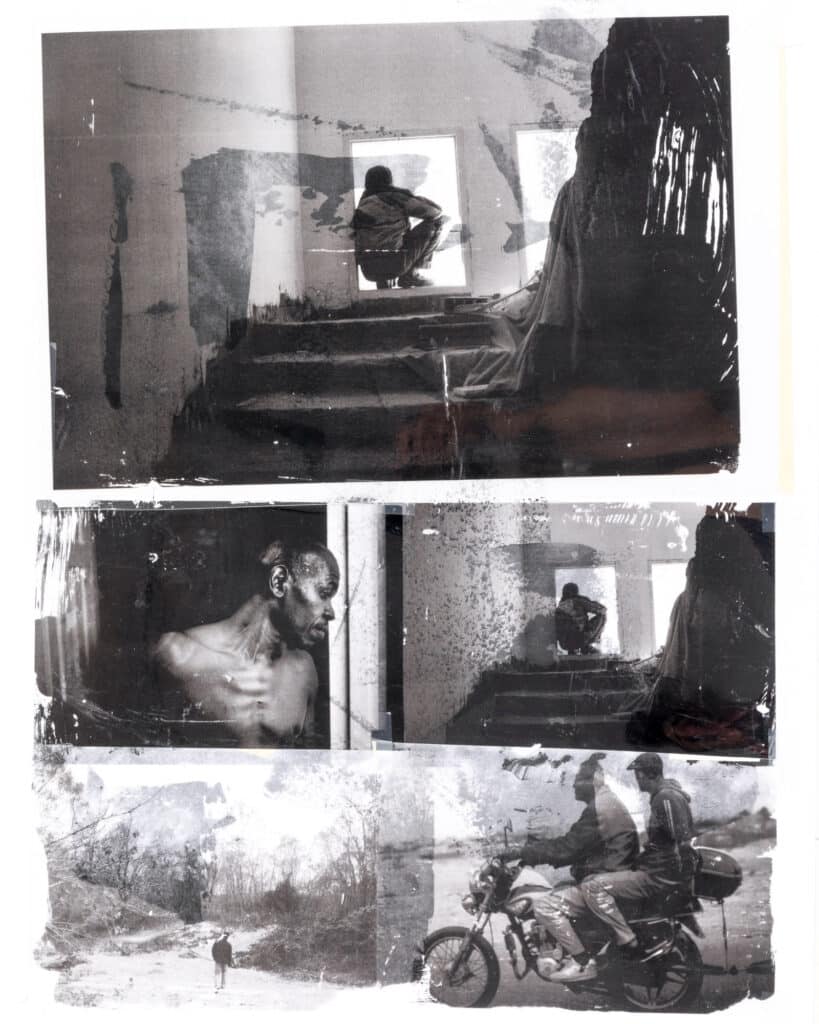After years working as a photojournalist in Italy, the United States, the Middle East and North Africa, Gabriele Stabile’s frustration at seeing his images crushed into the news cycle pushed him to try and reappropriate them: “I couldn’t look at them anymore as they were,” he says, “I would go to a place like Gaza or Lampedusa and spend time in hospitals, prisons, where I met people and established a relationship with them in situations that were too complex to be fully told in an editorial context. When and if published, the photographs would fit into a specific narrative and hold the attention span for a few seconds, while in my life those encounters bore an enormous weight.”
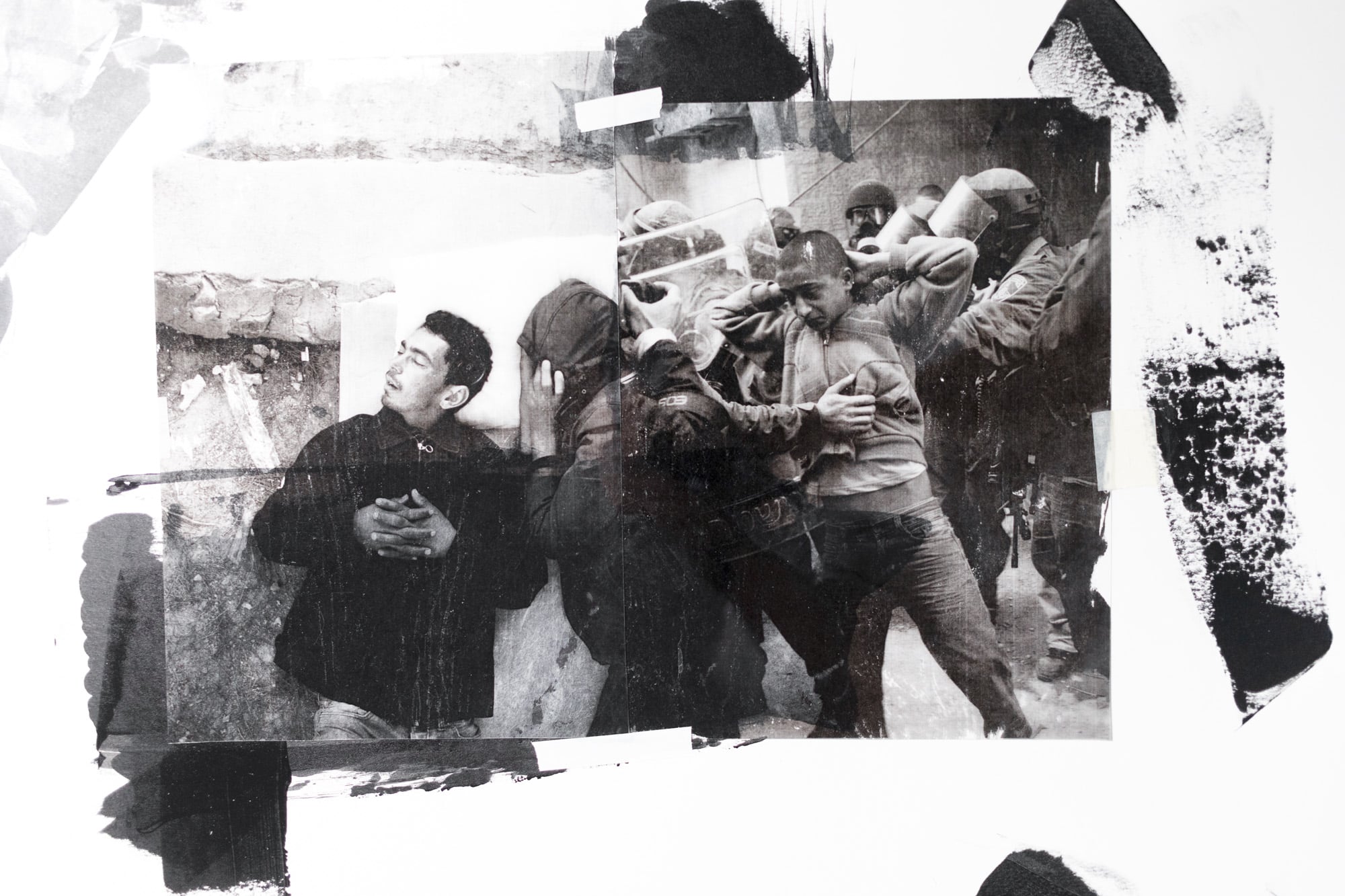
Whenever Gabriele returned from a reporting trip, he would make laser prints of those images and put them in a bag, which gathered dust over the years. In time, the desire to reestablish a connection with those moments won over the instinctive reticence as a photojournalist to touch the surface of the images. “I remember Wim Wenders writing that digital images, as opposed to film, contain an innate invitation to manipulation. I think it’s true, in a way that is hard to fully explain, so I wanted to work on them as one does in the darkroom, by trial and error, by hand, as opposed to the exact calculations inherent to digital interpolation, performed by software.”
Borrowing acrylics that his wife, painter Pax Paloscia, uses to fluidify colors, Gabriele began to experiment on different surfaces. He tried paper, wood, canvas, before finally choosing to work on a transparent surface. “If you transfer the image onto a transparent plate you get a positive image made of a scale of greys. I removed the paper from behind, to lighten the image, physically and metaphorically. The whites disappeared and what remained was light and shadows on a transparent sheet. Then I started painting, or scratching the surface, and I stepped into a different world.”
One of the most remarkable traits of Gabriele Stabile’s documentary work is its fluidity; the characters’ gestures, their ways of walking, their physicality, fuse with the environment surrounding them, flowing from one frame to the next. His manual work on the images takes this quality and enhances it. In the course of the book the same photograph repeats itself in various iterations, paired with different images, reworked in various ways, echoing through the edit. The characters move in a world that is flattened by strokes of paint and scratches. They jump, run, fall, crawl. If they’re not completely weightless, they negotiate a new relationship with gravity, on a ground that is rarely visible and never stable. Dreams and memories alike, after all, pull the ground from under our feet.
The hypnotic feeling we experience as we turn the pages is reminiscent of filmmaker Jonas Mekas’ editing flow, where the importance of every rarefied scene lies in the eye of the beholder: “I am trying to get to the essence of a moment, and this essence, during the moment of filming, incorporates all of the past: the way I see what I am filming, the way my eye moves, the way my body moves, camera, the detail I’m focusing on – all my past is concentrated, involved in that moment,” said the director.
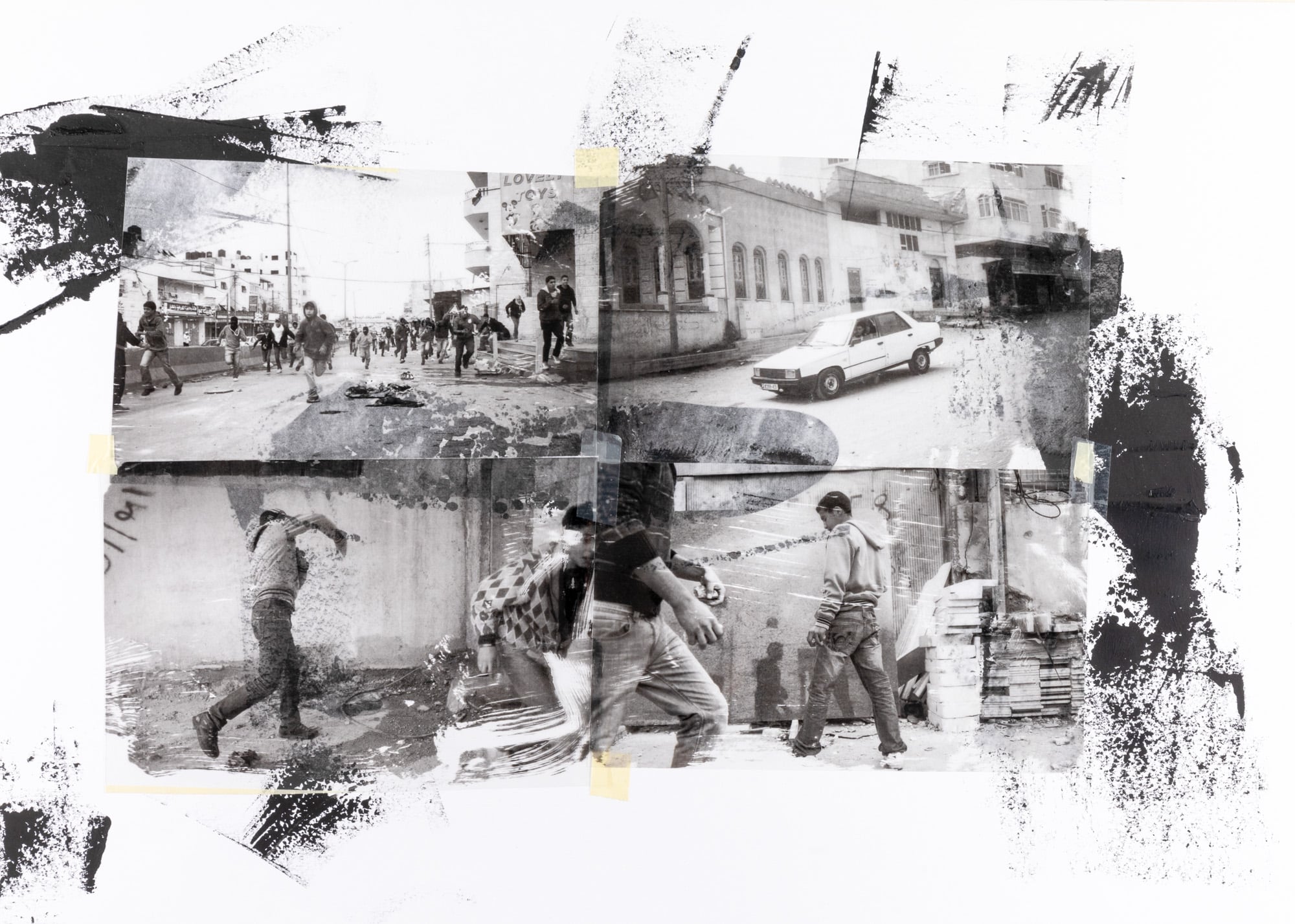
While Jonas Mekas meticulously documented the everyday of his own long life, Gabriele Stabile’s intent as he shot the photographs was to make the lives of others visible, in the frame of personal and historical moments. By working on them years later, he tried to revive the essence of the transitory moments he shared with those people, in ways that a caption couldn’t convey. The images deliver the beauty and confusion of moments lived in their raw form, fractions of seconds centred in themselves, not yet turned into narratives, not functional in the “representation” of marginalised groups, or to inform a readership about revolutions and political struggles.
With that intention, the photographer hesitated to write a traditional text for this book. “Hitchcock preferred avoiding the voiceover because he didn’t want to tell the viewer what happened, he wanted to show it. Once we pair an image with words we inevitably offer a key to read it, and it’s hard then for people to see it any other way. I think the most sincere act of love towards a photograph is letting it live and accept it in its vagueness, its ambiguity”.
Stepping back from the interpretation of the images, Gabriele Stabile’s writing takes the form of scattered words in a stream of consciousness, in various languages, just as they came up when he looked at the mockup for the first time: “casa”, “dernière”, “Libyan Wings Airlines”, the number 53, which also appears on a car wheel in one of the photographs. “What was a sports car doing in Gaza? I don’t remember.”
The quote at the beginning of the book, from Joseph Conrad’s tale The Secret Sharer and Other Stories, is just as enigmatic as the images themselves: “Let them think what they liked, but I didn’t mean to drown myself. I meant to swim till I sank – but that’s not the same thing”. In Conrad’s story, a young ship captain saves from the sea a drowning sailor who committed a murder on another vessel, hiding him in his cabin, until their respective positions in the relationship start blurring, becoming more complex.
The photographer chose the tale for its strong psychoanalytical connotation, where the sailor symbolises the subconscious, and the captain’s cabin is the domain of the rational mind. “Have you ever sailed at night, when the sea is pitch black and you don’t see anything? Imagine pulling a man out of that darkness.” Gabriele shot his photographs mostly during the day, trying to think journalistically, being transparent in the way he saw each scene, to help others read them. The black paint, scratches, echoes and glitches of memory run through the book, pulling his inner world into the work itself, acknowledging the subliminal side of an Illuminist version of reality.
The book “Swim till I Sank” is published by RVM and available at the price of 57 Euro.
